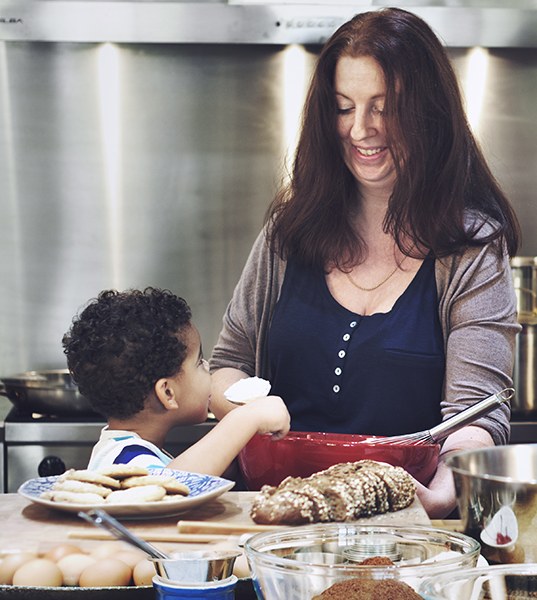Posted: January 13, 2016
Families with busy schedules can struggle for time to put a home-cooked meal on the table, much less find time to include young children in cooking activities. What was once considered a life skill is becoming, for some, a dying art as convenience and processed foods become the norm. Yet, children can learn much more than healthy food choices through early experiences with cooking and there are benefits for families as well.

Benefits of early cooking experiences
Research shows that children who cook are more willing to try new foods. As they are involved in the process from harvest to washing food to preparation and cleanup, there are multiple opportunities for sensory exploration as children touch, smell, and see the food before they ever taste it. Familiarity with the food can develop a feeling of ownership that increases likelihood of tasting and perhaps even eating the food.
Age-appropriate cooking activities build skills leading to self-confidence for children. Safety is a primary concern when children are in the kitchen. Close supervision, child-size equipment, and activities that match the child's developmental age are key.
Time that adults spend cooking with children provides an ideal opportunity for discussions about healthy foods. It is also a great time to engage families and strengthen relationships. Rather than the child being "parked" in front of a screen during meal preparation, the child can be actively involved in a simple step or two in the process.
In the child care setting, lessons in cooking can also teach math and literacy skills. Children learn new words as they read and prepare recipes. As their skills progress, they learn to measure and count. They can also learn about diversity through the sharing of traditional foods from other cultures.
Tips for success
- Plan ahead. Choose a simple recipe and determine what steps the children can complete. Prepare other steps ahead of time as much as possible.
- Heat is not necessary. Not all cooking requires heat. Think of ways children can prepare their own snacks such as spreading sunflower butter on sliced apples.
- Ask for help. This is especially important when multiple steps are involved. This is a great opportunity to invite parent volunteers. With preschoolers, it is helpful to have one adult for every two to four children.
- Include children in prep and cleanup. Cooking with children can be messy, but it is important that they learn this is all a part of the process.
- Follow food safety guidelines. Good hand washing is extremely important. Make sure that children know not to taste batters with raw egg or other potentially hazardous uncooked ingredients.
- Focus on fun. Children do not need to be involved in every step of the process to enjoy and learn from cooking experiences. Keep instructions for activities simple and age-appropriate. Encourage the children to explore by asking questions like "How does this smell?" or "Why do we add salt?" Consider each activity to be a learning experience that helps to inform what might work better the next time around. Keep in mind children should not be forced or coerced to taste or eat the food, but can try it when they are ready. Bon appétit!
For more information, including sample child-friendly recipes and information on age-appropriate cooking activities, view the Better Kid Care On Demand lesson "Children Can Cook!"

